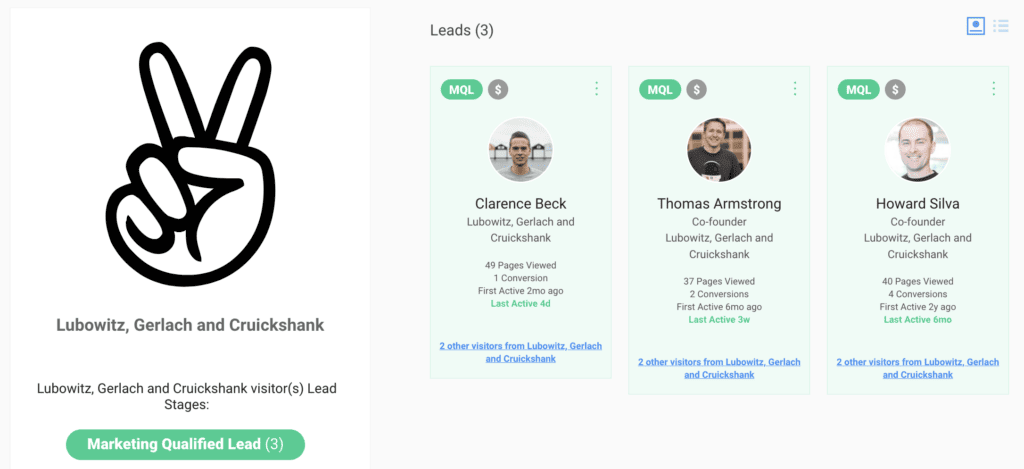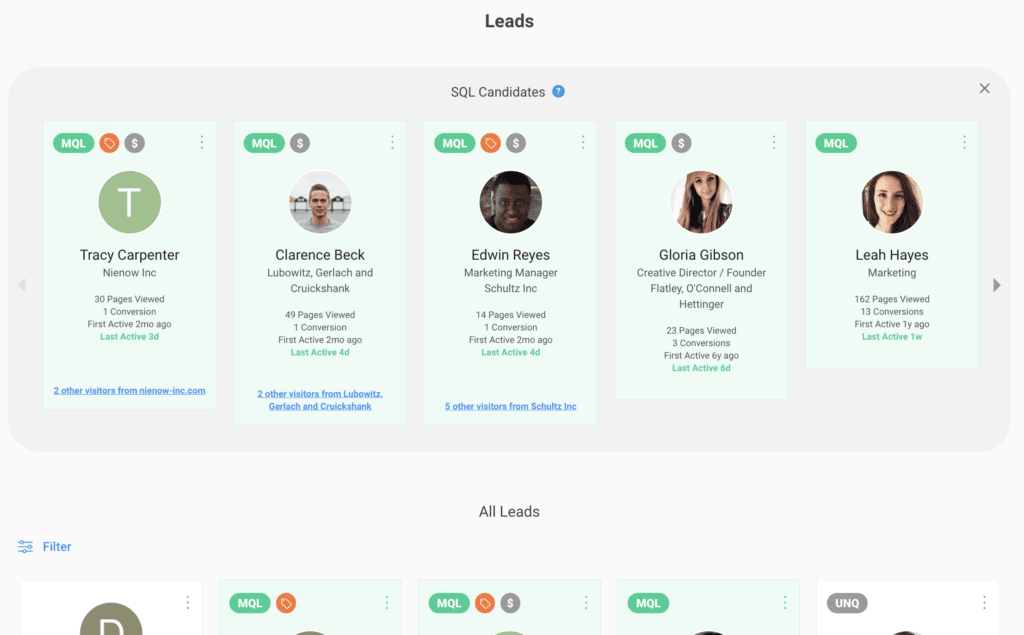With sales outreach, you can’t underestimate the right email at the right time. But how are you supposed to know what “right” means? One look at your LinkedIn inbox will show you how wrong most salespeople get this.
“Popping this back up to the top of your inbox!”
“Did you get my 5th follow up the other day?”
“All you have to do is solve this Sudoku puzzle and I’ll stop emailing you.”
Smart prospects aren’t clicking on those emails. They don’t work because this “spray and pray” approach to sales outreach is reaching them at the wrong time in their journey. Even after someone fills out a form on your site or engages with you on LinkedIn, it doesn’t mean they’re necessarily ready or will be receptive to your outreach.
In order to understand when that right time is, you need to be able to determine which leads are marketing qualified leads (MQLs) and accurately gauge what they intend to do. Are they just researching a topic to find an answer to a problem? Or are they actively vetting your company as a potential partner? Let’s dive in and ensure you don’t miss an opportunity that’s right there on your doorstep.
Reading the Tea Leaves: Understanding User Intent
You have tools at your disposal right now to help you analyze user engagement with your marketing like Google Analytics or whatever email marketing platform you’ve employed. But the best way to glean specific and actionable insights from user activity is from an analytics tool that overlays your marketing campaign performance with lead activity.
To get the whole story from an MQL, you want to know the path they have taken: the ads they clicked, the pages they’ve interacted with, the assets they’ve downloaded, and in what order all that engagement took place.
Newfangled’s clients use the Insight Engine in conjunction with guidance from our team of consultants. Here are three ways this powerful tool helps ensure you get that valuable MQL the right message at the right time and move them to sales qualified lead (SQL) status.
Engagement Pathways Show User Intent
Assessing where a genuine lead is on their buying journey is a nuanced practice. While you can never know with absolute certainty what a lead intends to do, you can make some pretty educated guesses with the right tools at your disposal.
If a lead enters your site via a piece of thought leadership only to navigate to your job listings, that’s pretty clear intent. But what about a lead that reads a blog article or two, downloads a white paper and then exits? Giving up their company email to access a gated asset is a step in the right direction but they didn’t take that all important step of sending a contact form.
(Click through above for an interactive demo)
Newfangled’s Insight Engine tracks the lead’s progress over time. If that same lead returns to your site six months later and reviews your service pages, you’ll know it. That pathway, though stretched over a long period of time, suggests intent. If they viewed positioning pages like service pages or case studies after reading thought leadership, they very well may be ready to hire. And a well-timed outreach email could be just what they need to get off the fence and have a conversation about your firm.
Multiple Leads From the Same Firm Suggest Planning
Sometimes you need to pull back and get a broader view of lead activity to accurately determine intent. If you’re just reviewing a wall of leads and their individual actions, you may miss the fact that some of them are from the same company. While it’s possible that two or more individuals are researching your firm simultaneously by chance, it’s more likely that they’re having internal discussions about your firm and the services you offer.

In the “Companies” view (see above), the Insight Engine groups users from the same organization so you immediately get a sense of the most active brands in your lead pool. This also allows you to compare the titles of those leads to get a sense of who might be the right person to reach out to and gauge their interest in a meeting.
Automating Lead Qualification Through Algorithms
While an analytics tool will never be as effective as a principal in your company at qualifying leads, there are ways to elevate certain groups to make the qualification process simpler and faster.
You’re likely familiar with lead scoring, where an algorithm weights a lead’s viewed pages and actions and assigns them a number to help you gauge their intent. Similarly, the Insight Engine will elevate a lead to “SQL Candidate” status if that lead performs a certain set of actions.
While the “SQL Candidate” rules are adjustable, the base setting elevates leads if they have done the following:
- Viewed at least five pages of content on your site
- Viewed at least one positioning page on your site
- Converted and filled out at least one form field on your site
If all these rules are met, a lead will appear in an elevated “SQL Candidate” box until you either proactively reach out to them or unqualify them manually.

Don’t wait for that hallowed contact form submission if you can see that you have engaged, warm leads. Be proactive and timely and reach out to leads based on data. Make this process part of your weekly (or daily) business development hygiene.
With the Right Insight Tools, You Don’t Have to Wait for Business to Come to You
If you’re not qualifying leads on a regular basis and proactively reaching out to the ones who have thoroughly engaged with your content, you can rest assured that your competitors are.
Using an analytics and lead tracking tool like the Insight Engine gives you a leg up on the competition by highlighting the patterns and actions you need to understand in order to ensure you make contact with your future client at the exact right time, with the exact right message.
